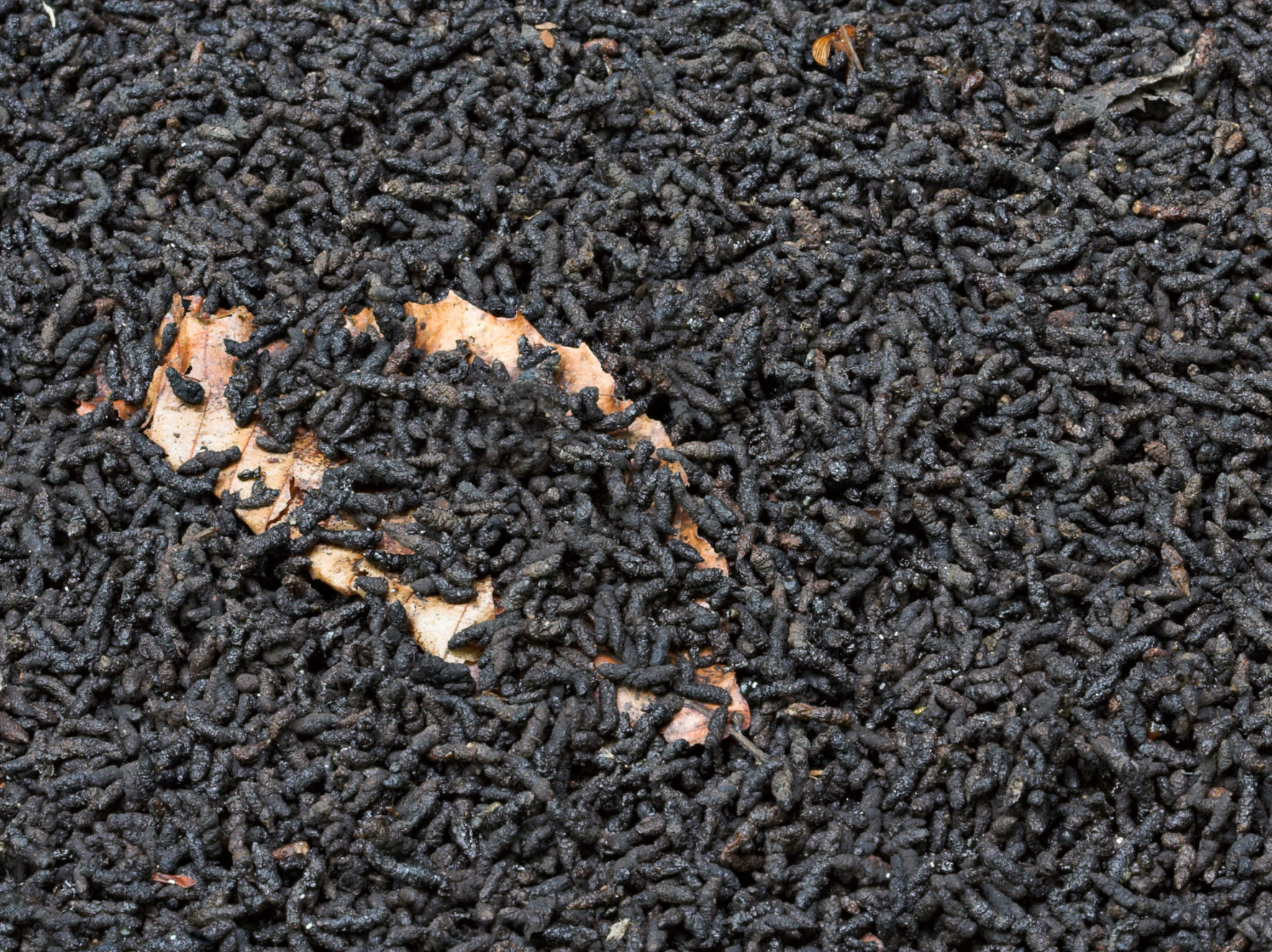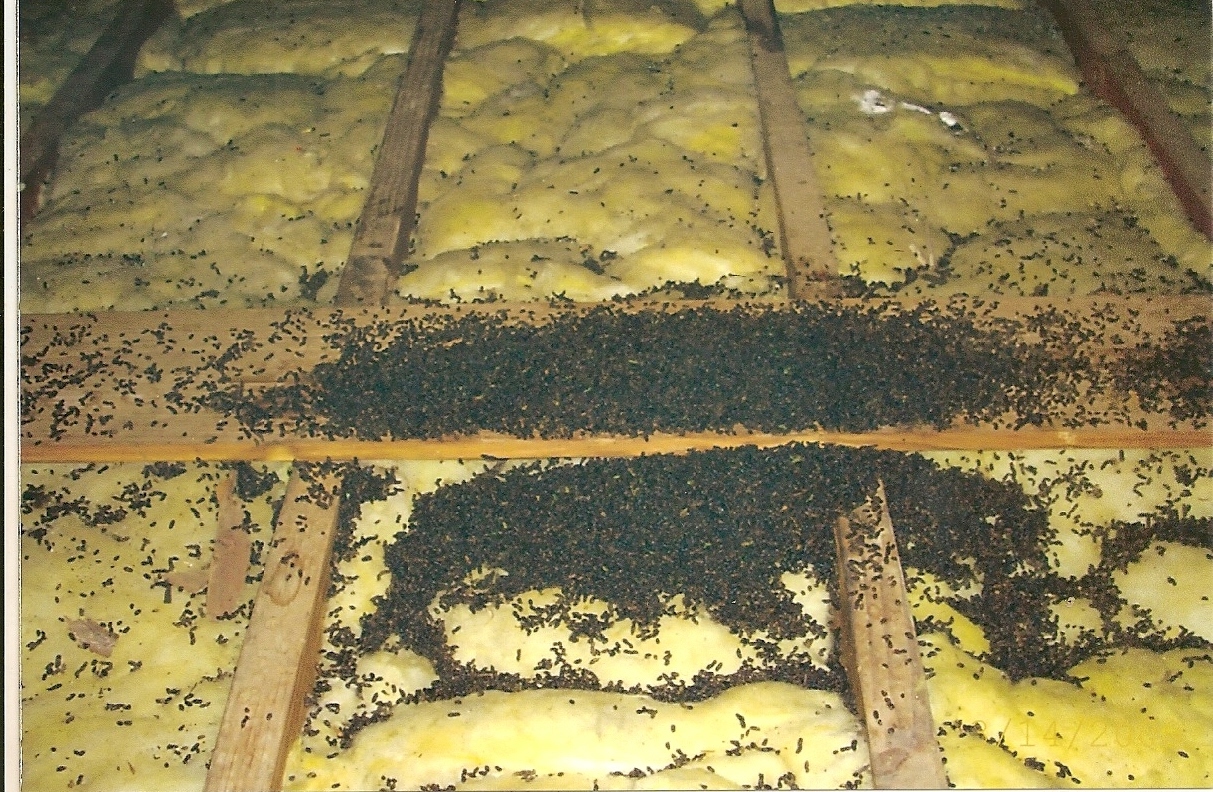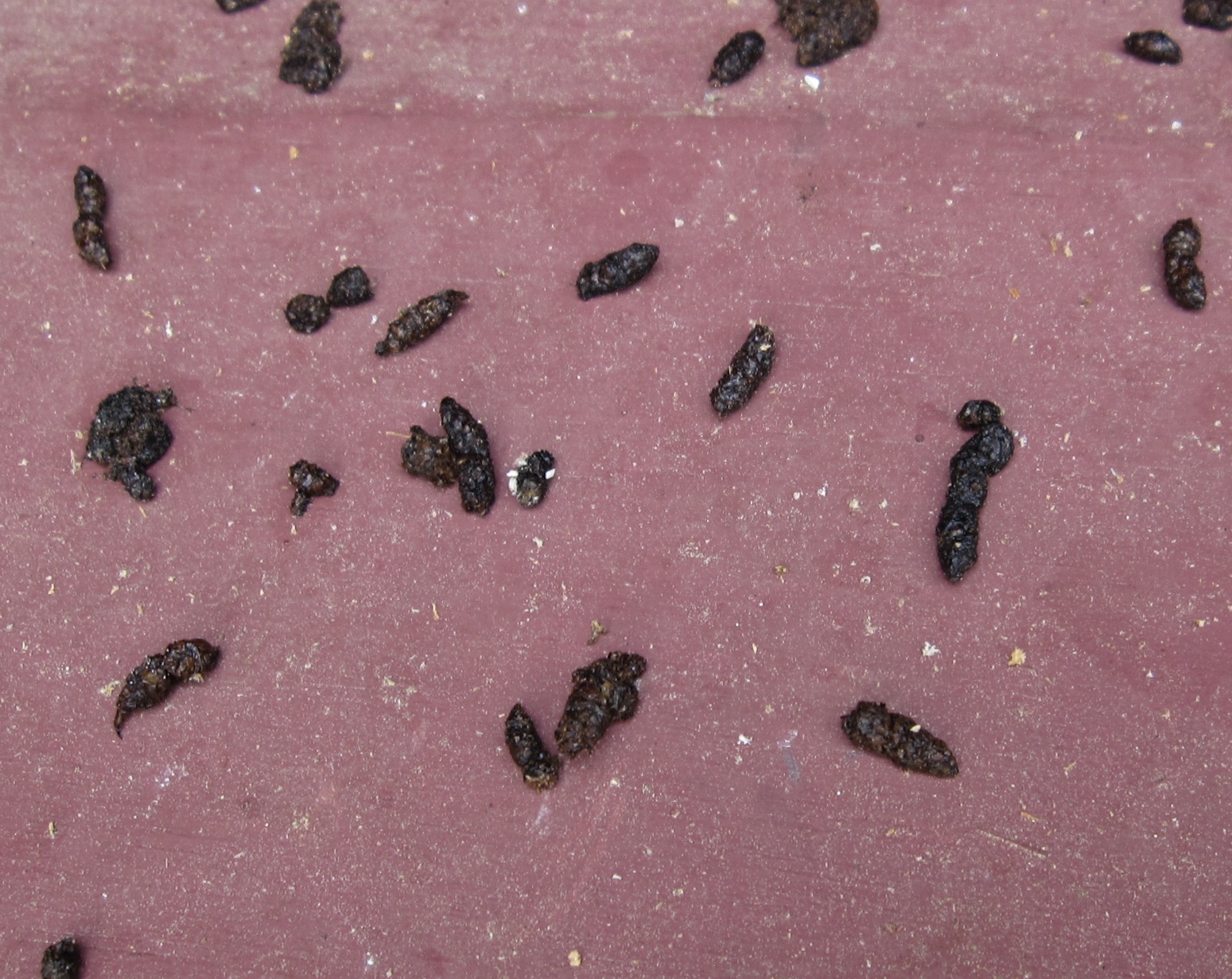Unraveling The Mystery: What Colour Is Bat Poop, Really?
Have you ever found strange little pellets around your home or property and wondered, "What colour is bat poop?" It's a question that, frankly, a lot of people might quietly ponder, especially if they suspect they have some nocturnal visitors. Knowing the color of bat droppings, often called guano, is actually a pretty important step in figuring out what kind of creature might be sharing your space. It helps you identify bats and, just as importantly, tells you what they've been eating, which is, you know, rather interesting in its own way. This little bit of information can save you a lot of guesswork and help you decide what to do next.
Understanding the appearance of bat guano is a practical skill for homeowners and wildlife enthusiasts alike. It's not just about curiosity; it's about distinguishing bats from other small animals that might leave similar traces. For instance, if you're looking for a small, dark pellet, it could be from a bat, or it could be from a mouse, and telling the difference really matters for how you handle things. So, knowing what to look for, especially the color, helps a lot.
The perception of color, as we know from "My text," is a significant part of how we experience the world, helping us describe objects in terms of hue, lightness, and saturation. When it comes to something like bat guano, these color details give us big clues. A bright color, or a lot of a certain shade, can provide valuable insights into the animal's diet and even the age of the droppings. So, let's explore the typical hues of bat droppings and what they mean, because, well, it’s quite useful to know.
- Vegamoviessi Your Ultimate Destination For Movie Streaming.linkmaz
- Exploring The World Of Hd Hub 4 U Movies South A Comprehensive Guide.linkmaz
- Scarswonderland Onlyfans Nude.linkmaz
- Hdhub4uspa Your Ultimate Destination For Highquality Media Content.linkmaz
- Jesse Watters First Wife.linkmaz
Table of Contents
- What Exactly Is Bat Guano?
- The Typical Colors: Dark and Crumbling
- Bat Poop Versus Mouse Droppings: Key Differences
- Distinguishing from Other Animal Droppings
- Why the Color of Bat Poop Matters for You
- Health Concerns and Safe Handling
- When to Seek Professional Help
- Frequently Asked Questions About Bat Guano
- Putting It All Together
What Exactly Is Bat Guano?
Bat guano is just a fancy name for bat poop, or droppings. It's a natural byproduct of their eating habits, and bats, you know, are pretty busy eaters. Most bats in North America, for instance, are insectivores, meaning they munch on insects like moths, beetles, and mosquitoes. This diet has a very direct impact on what their droppings look like, especially the color and texture. So, if you're seeing these little bits, it's a sign a bat has been around, more or less.
The consistency of bat guano is also quite distinctive, which helps in identification. Unlike, say, rodent droppings, bat guano tends to be rather dry and crumbly. This is because bats digest their food so quickly, and insect exoskeletons don't break down entirely. You'll often find it breaking apart into powdery bits when you touch it, which is actually a really good clue. This unique texture, along with the color, paints a pretty clear picture.
The Typical Colors: Dark and Crumbling
So, what colour is bat poop most often? Generally speaking, you're looking at shades of dark brown or black. This deep, rich color comes from the digested remains of insects. Think about it: insects have dark exoskeletons, and when bats eat a lot of them, those dark parts, even after digestion, tend to keep their deep color. It’s pretty consistent, actually.
- Understanding The Subhashree Sahu Viral Mms Controversy A Deep Dive.linkmaz
- Jameliz Benitez Smith Onlyfans Leaks.linkmaz
- Shubhashree Sahu Mss Video.linkmaz
- Teach Me First Honeytoon.linkmaz
- Camilla Araujo Xxx Erome.linkmaz
Sometimes, though, you might see a slightly lighter shade, perhaps a very dark reddish-brown. This slight variation can be due to what the bat has been eating, or how fresh the droppings are. It's not usually a bright color, like red, blue, or green, as "My text" talks about in a general sense of color. Bat guano tends to stick to the darker end of the spectrum, which is important to remember.
Fresh Versus Old Droppings
The age of the guano can definitely affect its appearance. Fresh bat droppings are typically shiny and moist, looking almost like tiny, elongated black or very dark brown rice grains. They will feel a bit sticky if you were to, say, touch them, which you probably shouldn't do without gloves. This freshness means a bat has been there very recently, so you know, that's a clue.
As guano ages, it dries out completely. It loses its shine and becomes brittle, taking on a duller, more matte black or dark brown look. This older guano will crumble easily into a fine powder when disturbed, which is a key characteristic. So, if you find something that just falls apart, it's likely older bat droppings, and that's a good thing to know.
Diet and Its Effect on Guano Color
While most bats eat insects, some bat species have different diets, and this can, in a way, influence the color of their droppings. For example, fruit-eating bats, which are not common in many parts of the world, would produce droppings that reflect the color of the fruits they consume. Their guano might have a reddish or yellowish tint from berries or other fruit pulp. However, for the majority of people asking "what colour is bat poop," they are likely dealing with insect-eating bats.
The type of insects eaten can also cause subtle variations. A bat that eats a lot of dark-colored beetles might produce slightly different looking guano than one that primarily eats lighter-colored moths. It's a subtle difference, but it's there. So, it's not always just a single shade, but it typically stays within that dark range, you know, mostly.
Bat Poop Versus Mouse Droppings: Key Differences
This is where knowing the color and texture really pays off. Mouse droppings are often confused with bat guano because they are similar in size and color – both are typically dark brown or black. However, there are some pretty clear distinctions that help tell them apart. It's like comparing two very similar shades, but with distinct textures, you know?
Mouse droppings, for one, are usually firm and hard. They don't crumble into a powder when you poke them. Instead, they keep their shape. Also, mouse droppings often have a pointed end, like a tiny grain of rice. Bat guano, on the other hand, is usually more rounded or irregular in shape and, as we've discussed, will easily break apart. This is a very, very important distinction to make.
Another big clue is what you find *inside* the droppings. If you gently crush a piece of bat guano, you'll often see shiny, iridescent flecks. These are the undigested parts of insect exoskeletons, like the wings or legs of beetles, and they shimmer a bit in the light. Mouse droppings, conversely, will contain things like hair, bits of seeds, or other organic matter, but no insect parts. So, if you see sparkles, it's almost certainly bat guano, that's a fact.
Distinguishing from Other Animal Droppings
Beyond mice, other animals might leave droppings that could be mistaken for bat guano, but usually, the color and shape help you tell them apart. For instance, rat droppings are much larger than bat guano, typically spindle-shaped and about the size of a small bean. Their color is also dark, but their size is a dead giveaway, you know?
Cockroach droppings can also be tiny and dark, but they often look more like black pepper specks or small, cylindrical pellets with ridges. They don't have the crumbly texture of bat guano, and they won't contain insect parts from the bat's diet. So, it's a bit different in appearance, honestly.
Bird droppings are usually quite different too. They are often white or whitish-grey, due to uric acid, with a darker center. They are also much more liquid or paste-like when fresh, and they certainly don't crumble into a powder like bat guano. So, you can usually tell bird droppings apart pretty easily, it's almost a given.
Why the Color of Bat Poop Matters for You
Knowing what colour is bat poop is more than just a fun fact; it's practical. First, it helps you confirm if bats are present in your home or attic. If you find dark, crumbly droppings with shiny bits, it's a very strong indicator. This confirmation is the first step in deciding if you need to take action, and that's pretty important, actually.
Second, the appearance of the guano can give you clues about the health of the bat colony. Unusual colors or textures might suggest a change in their diet or, perhaps, an illness. While this is more for experts, it’s good to know that the color tells a story. Also, fresh, shiny guano means the bats are actively using the space, which helps you understand the extent of their presence. So, it's not just a random detail, it's quite informative.
Third, correctly identifying bat guano prevents misidentification. You wouldn't want to treat a bat problem as a rodent problem, for instance, because the solutions are very different. Bats are protected species in many places, and their removal requires specific, humane methods. So, getting the identification right from the start is, you know, absolutely essential.
Health Concerns and Safe Handling
While the color of bat poop itself isn't directly a health hazard, the guano itself can pose risks. The main concern is a fungal spore called Histoplasma capsulatum, which can grow in accumulated bat guano, especially in warm, humid conditions. When disturbed, these spores can become airborne and, if inhaled, can cause a respiratory illness called histoplasmosis. This is why you need to be very careful around it, basically.
Symptoms of histoplasmosis can range from mild, flu-like symptoms to more severe respiratory issues, especially for people with weakened immune systems. So, when you're looking at bat guano, regardless of what colour is bat poop, it's really important to avoid direct contact and certainly avoid breathing in dust from it. Always wear appropriate personal protective equipment, like gloves and a respirator mask, if you need to handle or clean up guano. You know, safety first.
When cleaning, it's best to dampen the guano slightly to prevent dust from becoming airborne. This helps keep those fungal spores from floating around. Proper ventilation is also key. After cleanup, thoroughly wash any exposed skin and clothing. It's a bit of a process, but it's important for your health, honestly. For more detailed safety information, you might want to consult resources like those from the Centers for Disease Control and Prevention (CDC).
When to Seek Professional Help
If you find a significant amount of bat guano, or if you suspect a large bat colony, it's usually best to contact a professional wildlife removal service. They have the expertise and equipment to safely remove bats and clean up guano without putting your health at risk. They also know the local regulations regarding bat protection, which is, you know, very important.
Professionals can also help identify entry points that bats are using and suggest ways to seal them up after the bats have left naturally (usually in late summer or early fall, after their young can fly). This ensures the bats don't return. So, if you're feeling overwhelmed, getting help is a very smart move, you know.
Frequently Asked Questions About Bat Guano
Q1: Is bat guano always black?
Not always, but it's typically a very dark brown or black. The exact shade can vary a little depending on the bat's diet and how fresh the droppings are. It's usually on the darker side of the color spectrum, you know, like a deep charcoal.
Q2: Does bat poop crumble easily?
Yes, absolutely. This is one of the most reliable ways to tell bat guano apart from other animal droppings, like mouse droppings. Because bats eat insects, their guano is full of undigested insect parts, which makes it very brittle and easy to break apart into a fine powder. So, if it crumbles, it's a good sign it's bat guano, usually.
Q3: What does fresh bat poop look like compared to old?
Fresh bat poop is often shiny and moist, looking a bit like tiny, elongated black grains. As it gets older, it dries out, loses its shine, and becomes duller and more brittle. It will also break apart much more easily when it's older. So, the appearance changes quite a bit over time, you know, as it dries out.
Putting It All Together
So, understanding what colour is bat poop, along with its texture, is a really helpful skill for anyone who might encounter these fascinating creatures. It's usually dark brown or black, often with shiny bits, and it crumbles easily. This knowledge helps you distinguish bat droppings from those of other animals, like rodents, which is, you know, pretty crucial for proper action. As "My text" suggests, color helps us perceive and describe the world, and in this case, it gives us vital clues about our environment.
Being able to identify bat guano accurately is the first step in addressing any potential bat presence safely and responsibly. Remember to always prioritize safety when dealing with any animal droppings, wearing protective gear and seeking professional help if the situation seems too big to handle on your own. For more fascinating insights into wildlife and home safety, you can learn more about bats and other creatures on our site. And if you're curious about different aspects of home maintenance, you might find useful information on our home improvement tips page. It’s always good to be informed, right?
- Sabrina Carpenter Nude.linkmaz
- Emuyumi Couple The Ultimate Guide To Their Love Story Journey And Influence.linkmaz
- Judy Warren.linkmaz
- Cheyenne Swenson Nude.linkmaz
- Mssethi Onlyfans.linkmaz

What does Bat Poop Look Like and How to Remove them - Pest Control Gurus

How to Remove Bats: What Does Bat Poop Look Like?

How to Remove Bats: What Does Bat Poop Look Like?